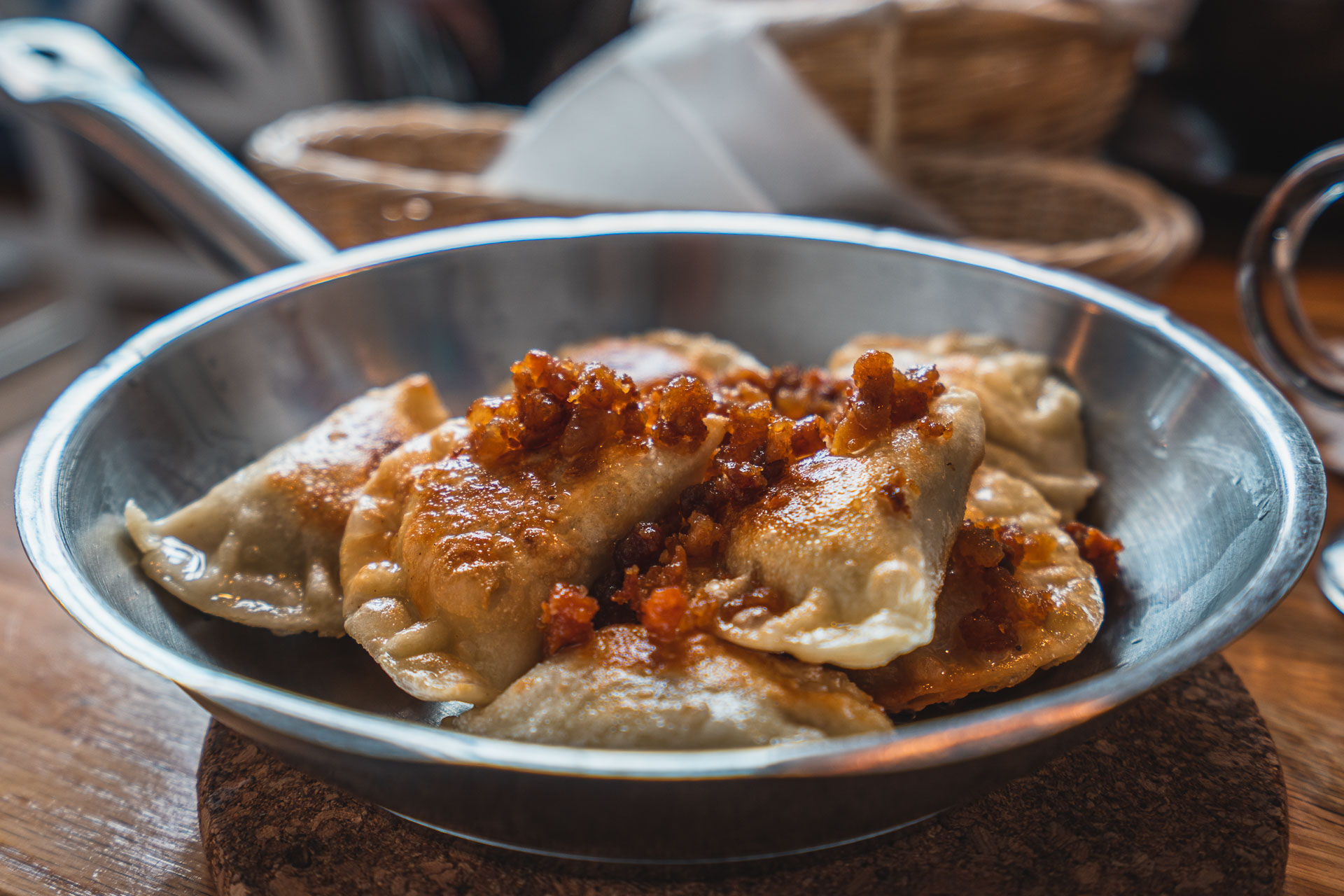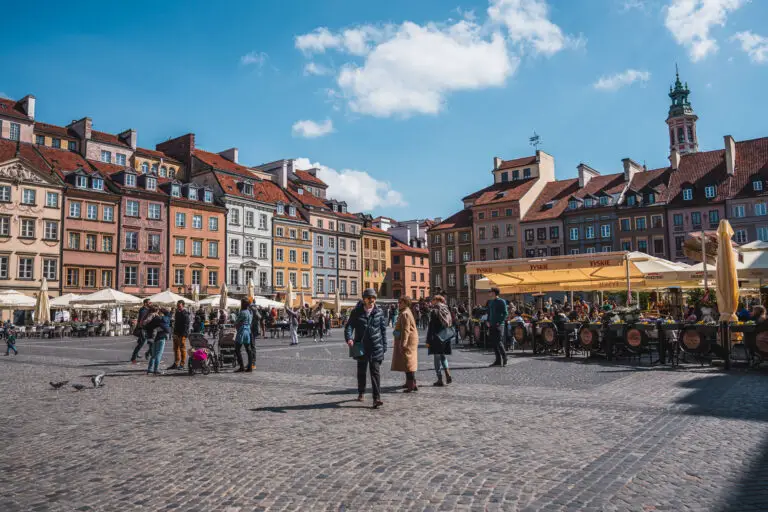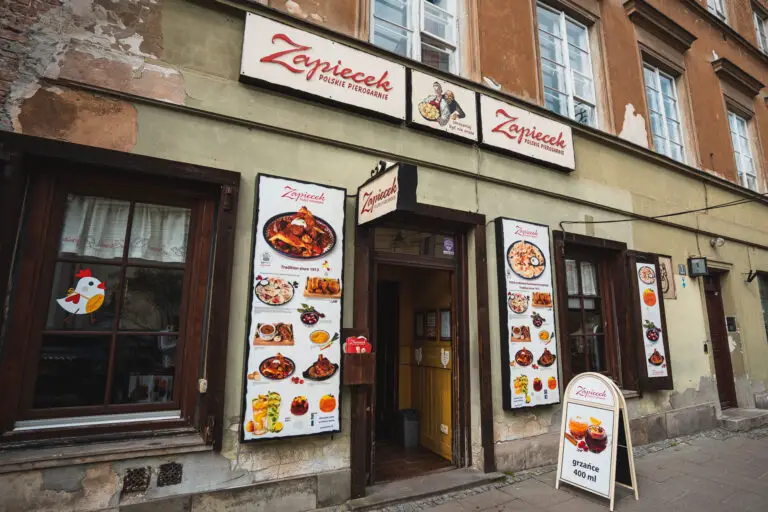22 Best Polish Foods You Must Try: Our Food Guide
Are you worried about the food coming to Poland? Don’t be. Polish cuisine has a lot to offer and is some of my favorite European cuisines that I’ve had the chance to try. From a wide variety of scrumptious soups to meat dishes full of flavor, Poland has everything.
Most of Poland’s cuisine is centered around the meat and potato diet that is quite common in this part of Europe, but Poland over the course of its long history has added variety to these simple fares. Additionally, much of Polish food originated in the kitchens of the peasants of the Polish past, meaning the food is usually made from the cheapest materials! However, the food does not sacrifice taste, as the food was tasty enough to work its way to the dining hall tables of Polish royalty.
In this blog, you will find 22 Polish foods that are must-haves if you can get the chance. These foods range from soups to main dishes, and desserts, which you should be able to find everywhere in Poland. I have also included a small list of regional specialties. These specialties are not easy to track down everywhere in Poland, but the population centers from which they come are certainly popular tourist destinations that you might find yourself in.
As a bonus, I have marked certain foods with an asterisk (*). These foods were recommended to me as essential to try by my Polish girlfriend, meaning they have a native seal of approval. Finally, I will include a short guide on how to find the perfect place to eat your Polish food, whether at a milk bar or from the local supermarket. So, sit back, and get ready to learn about what Poland has to offer your stomach. Smacznego!
Best Polish Soups
Zupa Pomidorowa*
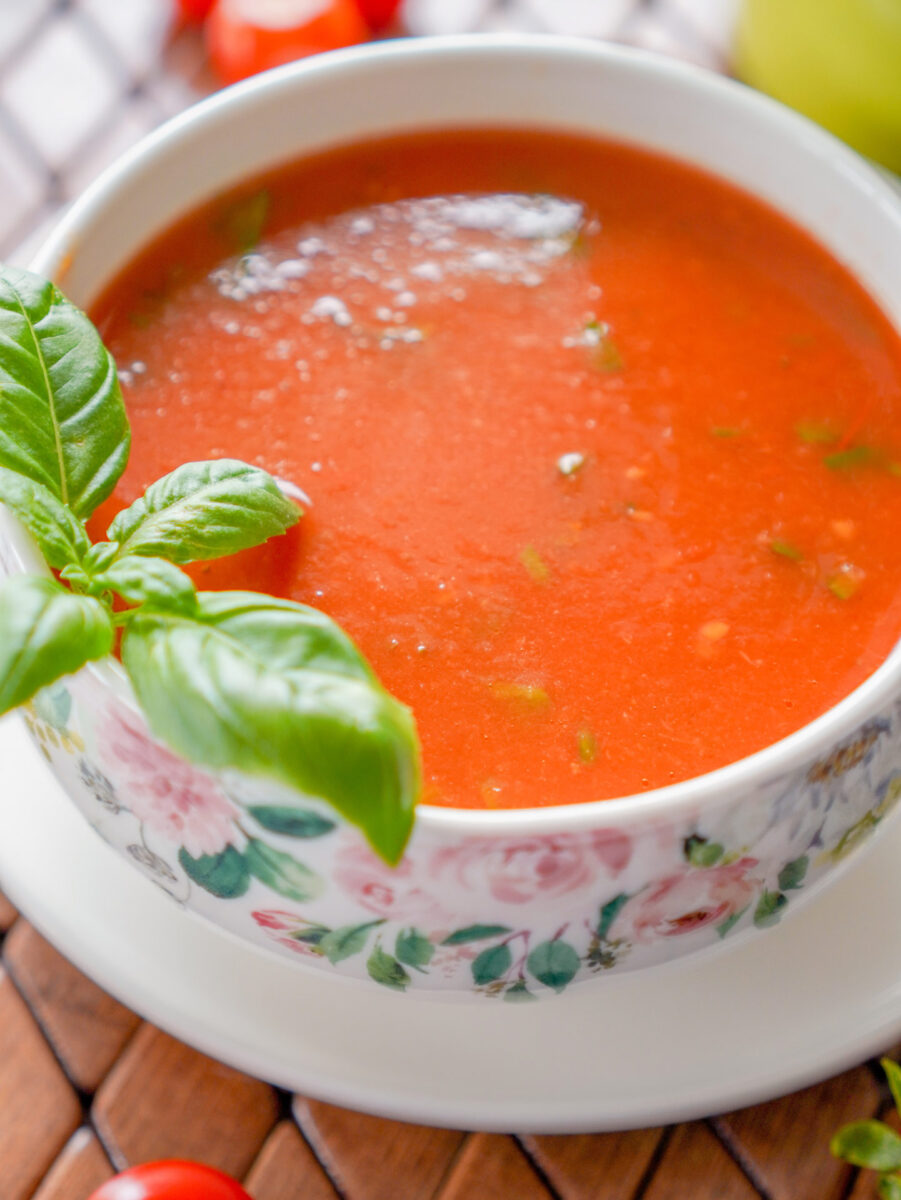
If you know any Polish, you will know this translates to tomato soup. Tomato soup does not sound special. However, the Poles do it slightly differently.
Firstly, tomatoes are an important part of Polish cooking, and you will find a large section of the freshest tomatoes possible in every marketplace. These tomatoes are the basis of a better tomato soup than your average can from a supermarket chain.
Additionally, root vegetables are added to the stock, and rice or pasta is added to the mix to make it more than just plain tomato, with a dollop of sour cream to top it off.
You will find this as a starter in many Polish restaurants, because it is cheap, quick and easy to make, and complements many dishes very nicely. So, if you are looking for a nice starter for your main course, try zupa pomidorowa!
Planning to visit Poland soon?
🛫Booking flights to Poland: For booking flights, we love to compare prices on Expedia and Kayak.
🛏️Booking hotels in Poland: When looking for hotels, we recommend using Booking.com and Hotels.com. We stayed at a couple of hotels in Poland and liked the following ones:
- Sofitel Warsaw Victoria (Warsaw)
- Hotel GEM (Wrocław)
- INX Design Hotel (Krakow)
⛪Booking tours in Poland: Viator is a great platform for finding tours and excursions to join.
🛣️Renting a car in Warsaw: Discover Cars is the platform we use when renting a car in Poland.
Zupa Ogórkowa*
When I first came to Poland last year, I had no idea just how important pickles were to Polish people. If you had a lineup of people from Central and Eastern Europe, the distinguishing factor of a Pole would be how much they love their sour pickles! This love comes together in the form of zupa ogórkowa, which is simply a sour pickle soup.
Depending on the region, you will get a different taste. Each region in Poland has its own way of fermenting cucumbers and takes great pride in its method. Now, I personally don’t like pickles very much, but this dish has my girlfriend’s seal of approval, and there is nothing quite as Polish as engaging in some pickle devouring.
Żurek*
Żurek (pronounced Zhur-ek) is another classic Polish soup, popular especially at Easter, but can be bought year-round at many Polish eateries. Żurek is a soup made of soured rye flour with meat, usually either pork sausage, bacon, or ham. In some regions of Poland, it is also common to serve this delicious, hearty soup with halves of hard-boiled eggs.
As was mentioned, Polish people have lots of sours in their culinary palate, and Żurek is no exception, with the sour soup often being served in a sourdough bread bowl. So, try Żurek if you want a taste of the festive holidays of the Polish and Catholic calendar.
Rosół
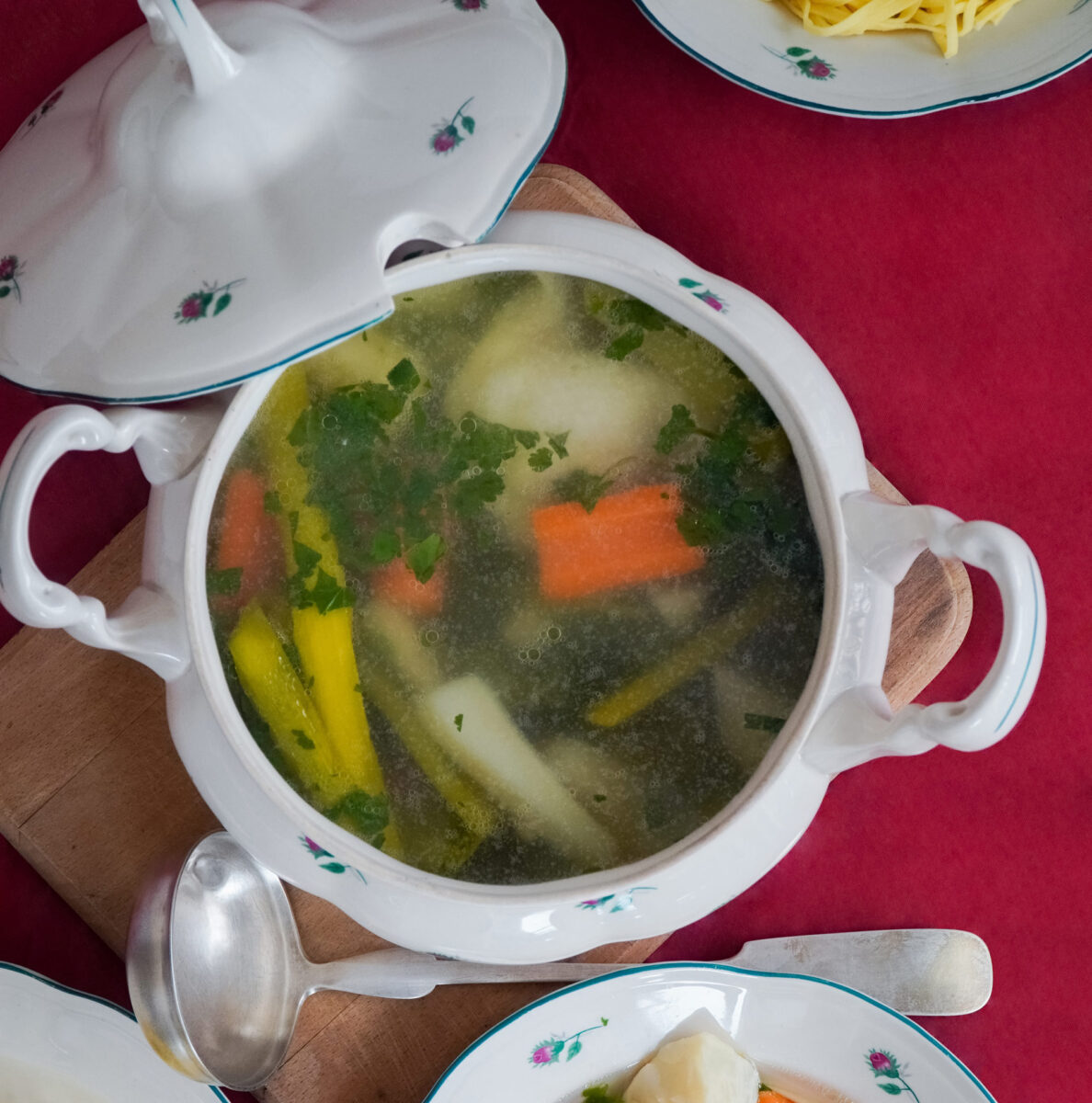
Rosół (pronounced row-sue) is essentially the Polish version of chicken noodle soup. It is best served piping hot from grandma’s pot on the old iron stove. But you can also find this dish in many Polish eateries.
While rosół is usually chicken broth served with the extremely thin capellini pasta, it can be made with the broth of any meat. After mixing the broth and pasta, all that is needed is the vegetables of your choice, usually carrots, and it is ready to be served as a side dish.
Common at Polish wedding receptions and other festive events, it is also makeable in your own kitchen! Polish supermarkets, such as Carrefour, usually have the fixings for rosół and other soups packaged together, so that all you need is the broth and the pasta! Try rosół for another festive Polish soup.
Barszcz Czerwony*
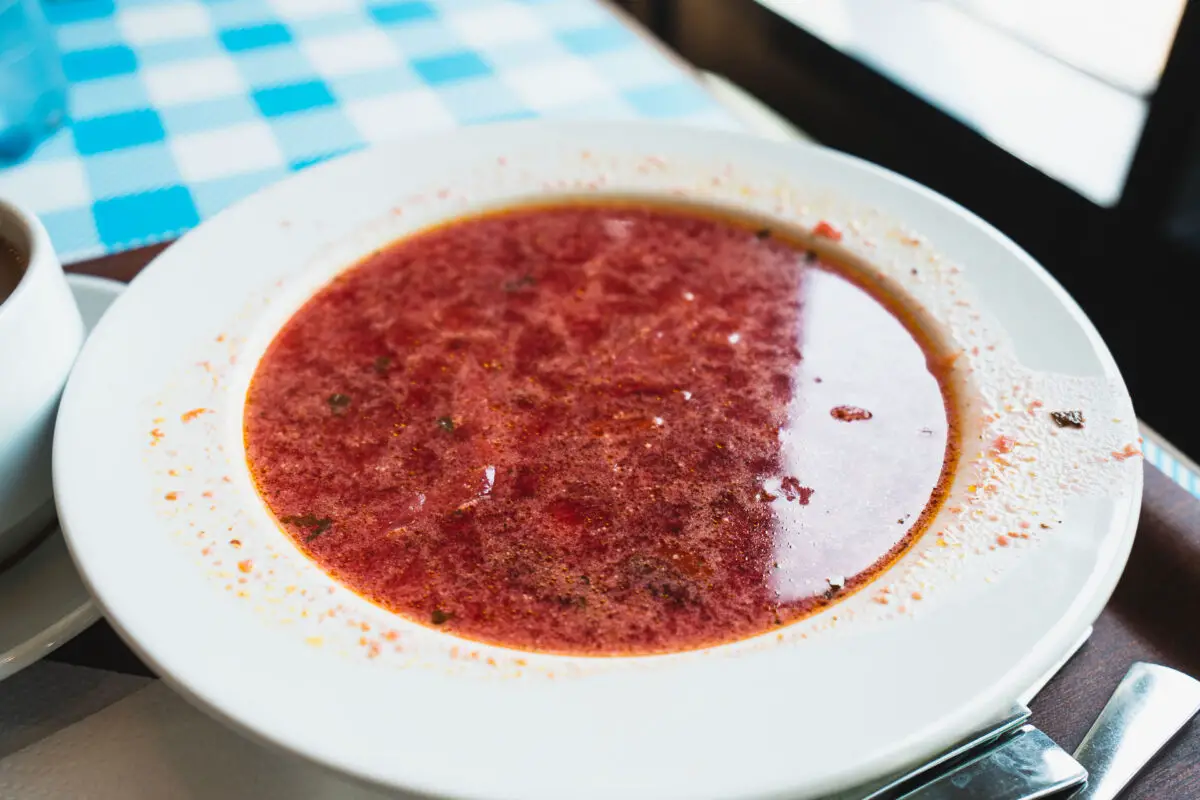
The first mistake I made coming to Poland was assuming that barszcz (pronounced barsht) was just borscht, the class Russian and/or Ukranian beet soup, with a Polish name. But barszcz czerwony (red barszcz) is a simpler variety of its next-door neighbor’s classic food.
Barszcz is simply a semi-translucent broth made of beets, without the added meat and vegetables and the opaqueness of borscht. It is still served piping hot, however. Its portability makes it a classic Polish food that goes well with many meals, although it is certainly not easy to make.
Try it in a convenient style, microwaving it in a mug and “eating” it directly from the mug, like my girlfriend does.
Bigos
Okay, this one really isn’t a soup, insomuch as it is a stew. Bigos, in fact, translates directly to hunter’s stew, and is perhaps one of Poland’s most famous dishes. It is famous enough to be mentioned in Adam Mickiewicz’s (one of the three famous “Polish Bards”) epic Pan Tadeusz and can be found everywhere in Poland.
What exactly is it? It is typically a mix of sauerkraut, shredded white cabbage, and some sort of meat, whether that be beef, pork, veal, poultry, or kiełbasa (more on that later). With so much flexibility in one dish, it is easy to see why it is so popular, its versatility makes it a perfect side dish or starter for many dishes. Additionally, you can find different varieties as you travel around Poland, whether by adding tomato paste, red cabbage, or even julienned apples.
It is likely that you will encounter bigos as an unassuming side dish to your main meal at a Polish restaurant, so make sure not to skip the bigos!
Best Polish Main Dishes
Pierogi*
Can you go wrong with pierogi? In my opinion, not at all. But before I describe pierogi in all their glory, I must conduct a lesson of Polish 101. Pierogi is already plural, so saying “pierogies” is nonsense! Impress your Polish friends with this tidbit and remembering that a single unit of these delicious dumplings is a pieróg.
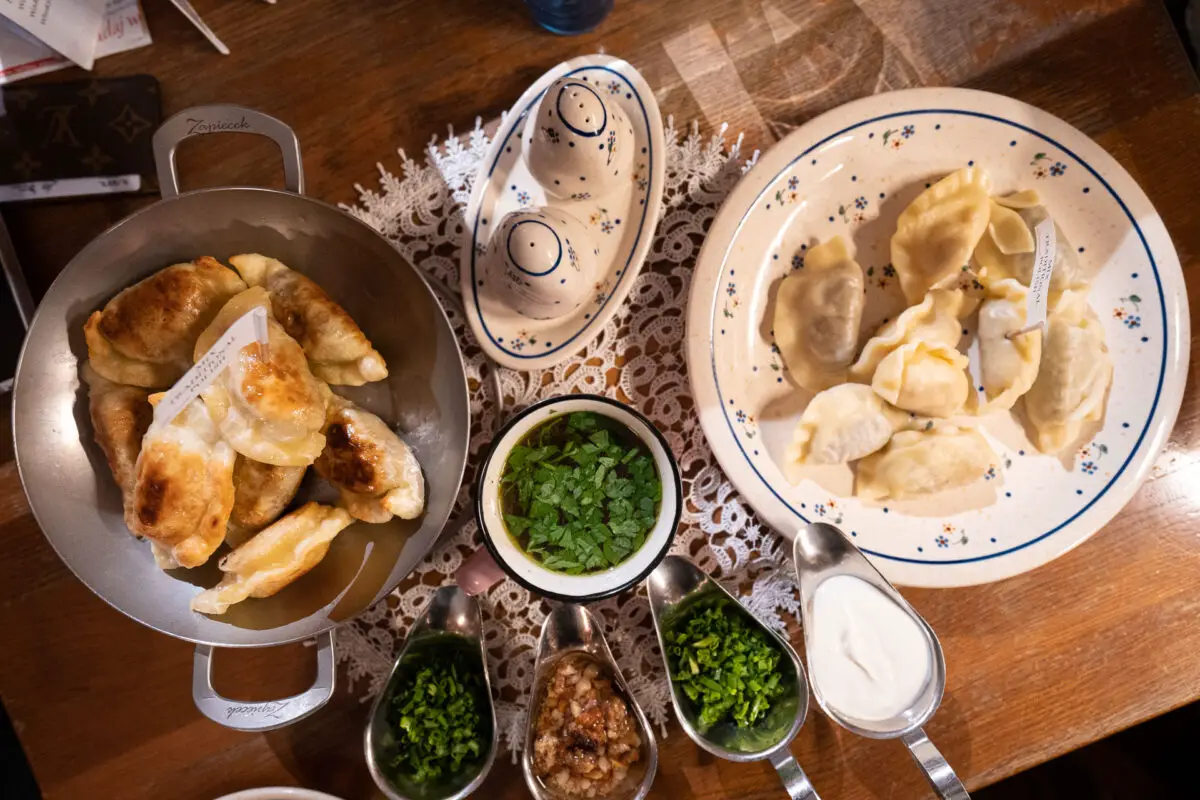
Now that this is out of the way, you are certainly going to want to try pierogi as much as you can possibly manage. These delectable dumplings are perhaps Poland’s biggest cultural export in the food sector, and this makes sense! They are delicious, they hit the spot for a main meal, a dessert, or for those late-night cravings.
The most common version are pierogi ruskie (ruskie means Ruthenian, not Russian!), which are dumplings stuffed with cottage cheese and potato, topped with fried onions and usually served with sour cream. You can also get them with cheese (z serem), with spinach (z szpinakiem) or with many types of meat (z mięsem). There are also sweet pierogi too, such as z jagodami, or with blueberries.
They are the number one food you should try in Poland, and you should certainly try pierogi when visiting Warsaw.
Kluski Leniwe*

These are the cousins of pierogi, so if your fried dough cravings have not been satisfied, try these too! Translated roughly to “lazy dumplings,” they are thusly named due to the relative ease of making them compared to regular pierogi. These dumplings are not stuffed and resemble gnocchi more than anything else. The dough is made from a mix of cottage cheese, boiled potatoes, wheat flour, eggs, potato flour, and salt. This dough is then separated into small balls and cooked to golden perfection.
Like pierogi, kluski leniwe can be served as a sweet or savory dish, with whipped cream, sugar, or cinnamon for the sweet varieties and sour cream or melted butter for the savory variety.
Kluski na parze*
Often called pampuchy, these are large dumplings made of yeast dough. The style simply means they have been steamed, and the resulting shape is unique in the dumpling world, with a circular shape, flat bottom, and little divot in the middle.
Like kluski leniwe, these can be found in the sweet or savory variety. The sweet variety is often with pudding and cottage cheese and fruit as the toppings, while the savory variety is often added to a variety of other dishes, including bigos.
If you couldn’t tell by now, dumplings, as well as pickles, are king in Poland, so trying all the possibility variety of dumplings is important for the full Polish experience!
Kotlet*
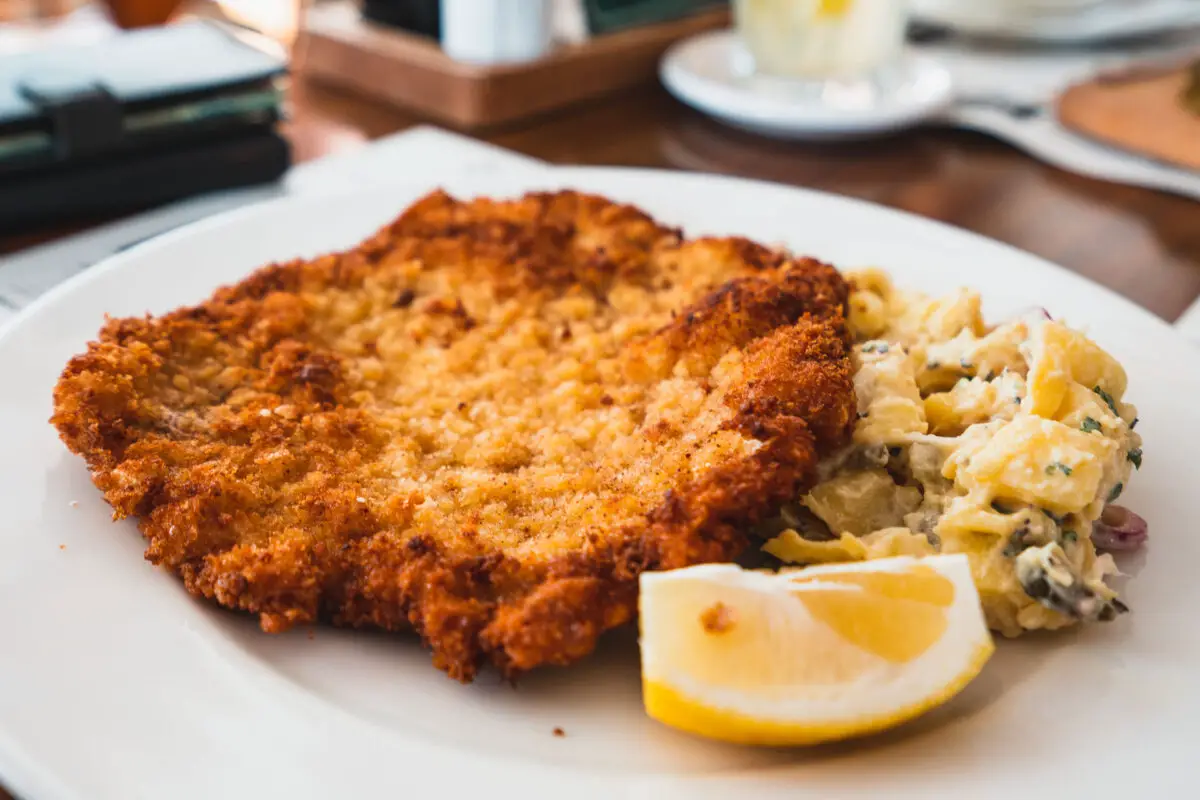
Kotlet is an all-encompassing term used to describe several meat dishes available in Poland. Kotlet is essentially cutlet, so thus a dish that kind of resembles the classic Wienerschnitzel of Vienna.
Kotlet might be made of breaded pork, beef, veal, or poultry. However, my girlfriend’s recommended variety is kotlet mielony, or minced kotlet. It is a mix of minced meat, onion, an egg, and breadcrumbs to coat. My girlfriend also suggests that the best side dishes for kotlet mielony are any form of potatoes, as well as Mizeria, a salad consisting of thinly sliced cucumbers mixed with sour cream, kefir, or oil, as well as a bunch of added seasonings.

Also, with kotlet, as well as many of the dishes in this section, surówka is worth a try. It is like coleslaw, in that is chopped vegetables such as carrots, celery, beets, or sauerkraut, mixed with lemon and sugar.
Kiełbasa
Can you go to Poland without getting kiełbasa? I say no. Kiełbasa is another huge Polish cultural food export, especially in the United States. But the term itself simply stands for any type of sausage produced in Poland, whether the beefy biała or wiejska, or the thin kabanos, a common snack that can be easily bought in Polish corner stores.

These smoked sausages make a perfect main dish, served with mustard or on its own. They are so full of flavor; it is like a party in your mouth with each bite. They are made with every type of meat known to humankind, but there are also vegetarian alternatives in some establishments. Simply speaking, you could eat a different type of kiełbasa each day for an entire year without repeating. Thus, you must try it, you will not regret kiełbasa.
Gołąbki

Gołąbki (pronounced go-wum-key) are another classic Polish dish, commonly served at festive occasions, but oftentimes cooked up by your Polish grandma if you deign to ask. Gołąbki are simply stuffed cabbage levels, usually with a mix of meat and rice at the center. This meat is typically minced pork or beef.
Generally, gołąbki are quite popular amongst Polish people; my girlfriend likes to bring home gołąbki made by her family and freeze them for a later time. But lest I forget, the most important part of eating a Gołąbki is the sauce! They are smothered in a rich tomato-based sauce, that is what makes the gołąbki worth your time.
Placki Ziemniaczane
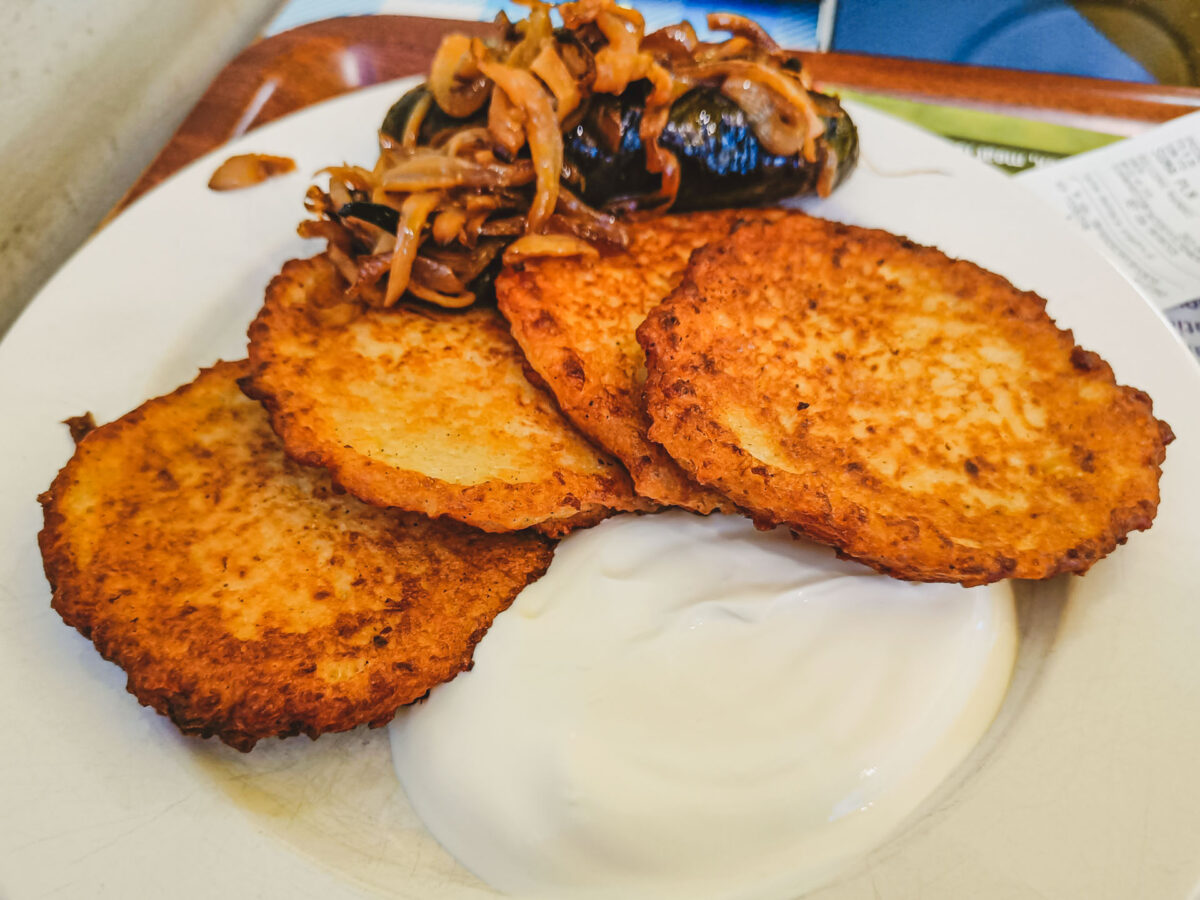
Translated, placki ziemniaczane are just potato pancakes! But they are especially delicious, this is one of my favorite traditional Polish foods to eat. Potatoes, as previously mentioned, are very common in the meat and potatoes diet of Polish people, and potato pancakes are the best way to try the Polish crop of choice in my humble opinion. The potatoes here just have a wonderful earthen taste. Get it served with sour cream and chives, or just eat them plain, either way it is delicious! This is also the perfect dish for the vegetarians in your family (but not vegans, as eggs are used to hold it together).
Best Desserts in Poland
Szarlotka
Now that you are full of a delicious soup starter and a dozen pierogi, hopefully you have some room for dessert! Perhaps the most Polish dessert possible is szarlotka, which is the Polish version of apple pie.
I keep overriding my earlier statements, but perhaps apples are the most important crop in Poland. Poland is world-leading producer and exporter of apples, and thus it makes sense that apple dishes like szarlotka are common. Apples are everywhere, going into a market will reveal large stands of just apples, and only POLISH apples.
Thus, to support one of the most import industries of Poland, try szarlotka. Named after Duchess Charlotte of Prussia, it is sour (do you see the theme yet?) apples, placed between two layers of short crust pastry, with powdered sugar and whipped cream added for embellishment. It is the perfect end to a perfect Polish meal.
Sernik
Sernik, like many other foods on this list, is the Polish adaptation of a classic food in other cuisines, in this case being cheesecake. The main difference to the New York style cheesecake you might have tried before is that sernik is made with cottage cheese, thickened with anything from wheat flour to boiled potatoes! It is also usually topped with raisins or candied orange peel. For a classy Polish dessert for any occasion, sernik is the choice for you.
Pączki

This might be the only item on the list that has (sort of) its own holiday! Pączki (pronounced pon-shki) are Polish donuts, in whatever variety you so desire, whether chocolate filled or the classic ring like Homer Simpson might eat, Poland loves their donuts, but especially on tłusty czwartek, or Fat Thursday.
Tłusty czwartek takes place the Thursday before Ash Wednesday, the start of Lent, and Polish people will stand in line for a long time to pick up a couple of dozen pączki for work, school, or family.
When visiting Łódź, the line for pączki even at five in the evening was 100 people long! But no worries, many pączki are made, and every bakery will sell them all through the day, so you will get them! But you can also get these every day at the many bakeries found in every Polish city or village, or even some kiosks by public transport spots. Wherever or whenever you have them, pączki are a must eat!
Makowiec
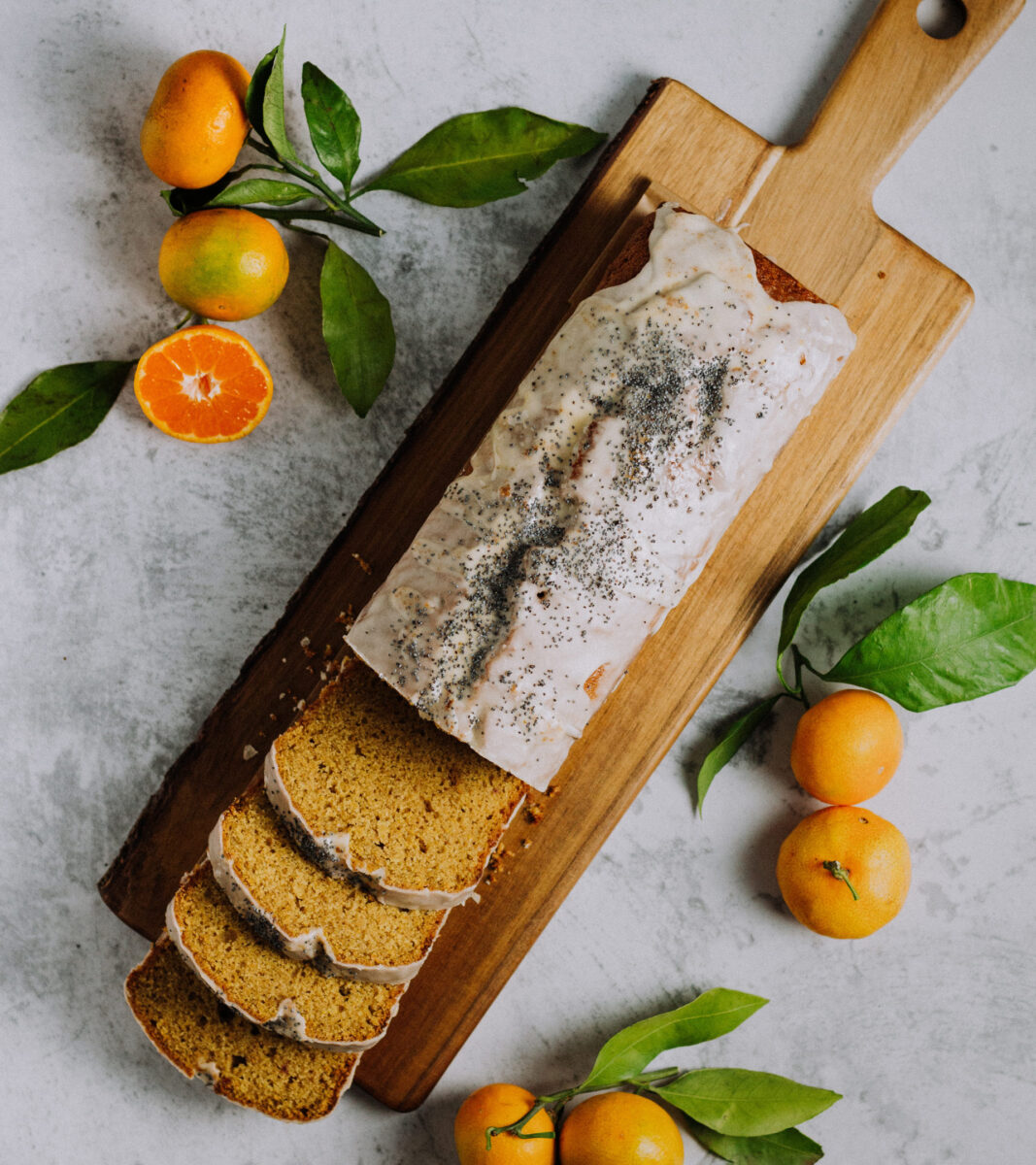
Makowiec is a cake made with sugar, honey, and most importantly, poppy seeds, as well as nuts and dried fruit as toppings. The cake mix is mixed will the other ingredients, and often rolled, so that the result resembles a Swiss roll, or made as a loaf of bread. For those of you who do not like super sweet desserts, this one is for you! A common snack as well, or a traditional dessert at the end of a traditional meal, this is also commonly eaten on holidays, especially Christmas and Easter. It is also said to protect against evil forces, so I must recommend it!
Regional Specialties
Rolada z kluskami śląskimi i sosem*
This mouthful of a name is fittingly an entire meal, which is traditionally from the Silesian Voivodeship, which is found in Southern Poland centered around Katowice. This is where my girlfriend was born and raised, and she highly recommends this dish if you visit Silesia.
Rolada, or Roulade, is made of large slices of beef leg, Silesian sausage, bacon, and vegetables, and made together into one mixed meat masterpiece, with an explosion of flavor in each bite. As per tradition, this should be served with kluski śląskie, or Silesian dumplings, with sauce. This can also be served with varieties of red cabbage and other surówka. Any traditional homestyle restaurant in Silesia will serve this if you ask, and I recommend you do so if visiting Katowice or any surrounding city.
St. Martin’s Croissant
This croissant, rogal świętomarciński in Polish, is a traditional dish found in Poznań and surrounding cities of the Greater Poland Voivodeship and is a sweet explosion of flavor. It is layer upon layer of dough, poppy seeds, vanilla, dates, figs, raisins, and cream, with sugar and peanuts as the icing on the cake.
Additionally, this pastry is special, because it is protected by EU regulation, meaning that any St. Martin’s Croissant made outside of Poznań and its greater metro area cannot be legally called St. Martin’s croissant! Additionally, for a cool experience, visit the museum dedicated to the history and making of them in Poznań. Poznań is already a great city to travel to on a budget, and this delectable experience only makes it better.
Oscypek
Oscypek is a specialty cheese from the beautiful Tatra Mountain region of southern Poland. You can find this cheese in Zakopane, and it is a must to try. My Polish language teacher told me that is her favorite part of Poland! This smoked cheese is made from salted sheep’s milk, has fancy shapes etched into its outside, and is served with cranberry jam. If you find yourself in the Tatras, don’t miss out on trying it!
Bryndza
Bryndza is the sister cheese to oscypek. It is a soft, rennet cheese also made from sheep’s milk. You will find it made throughout the foothills of the Tatra mountains, or as in Polish, Podhale. Like the St. Martin’s Croissant, it is regionally protected by the EU, so you can only get authentic bryndza in the Podhale. So, like oscypek, if you get the chance, you should try this intensely flavorful cheese!
Zapiekanki
Zapiekanki are a Polish invention that are a remnant of communist Poland. During the 70s, there was a period entitled “bigos socialism” when outside influence, including culinary efforts, was allowed into Poland by the ruling communist party. At this time, baguettes were imported from France, and a Polish politician created the zapiekanka, which is simply a baguette topped with mozzarella cheese and mushrooms.
Now, you can get a whole variety of zapiekanki at stands that sell them, with any variety of meats, cheeses, and vegetables, with the one constant being the original formula of baguette, mozzarella, and mushrooms. Zapiekanki are especially popular in some parts of Poland, such as in Plac Nowy in the Kazimierz district of Kraków, where there is a whole circular building full of different vendors selling their take on the zapiekanka.
Where to Get Your Polish Food
Now that you have read this list, and like me are hungry for Polish food, you might wonder where to get all this cuisine? Of course, there are many restaurants in Poland that sell traditional Polish fare found on this list, and bakeries will sell many of the desserts on this list. A unique place to try Polish food is at Milk Bars, or Bar Mleczny. Milk Bars, like zapiekanki, are a remnant of communist Poland, with milk bars being the place to get cheap, but filling food. They made a return for the sake of nostalgia within the past decade, and now there are many milk bars dotted through major cities. You can get much of what is on this list at Milk Bars.
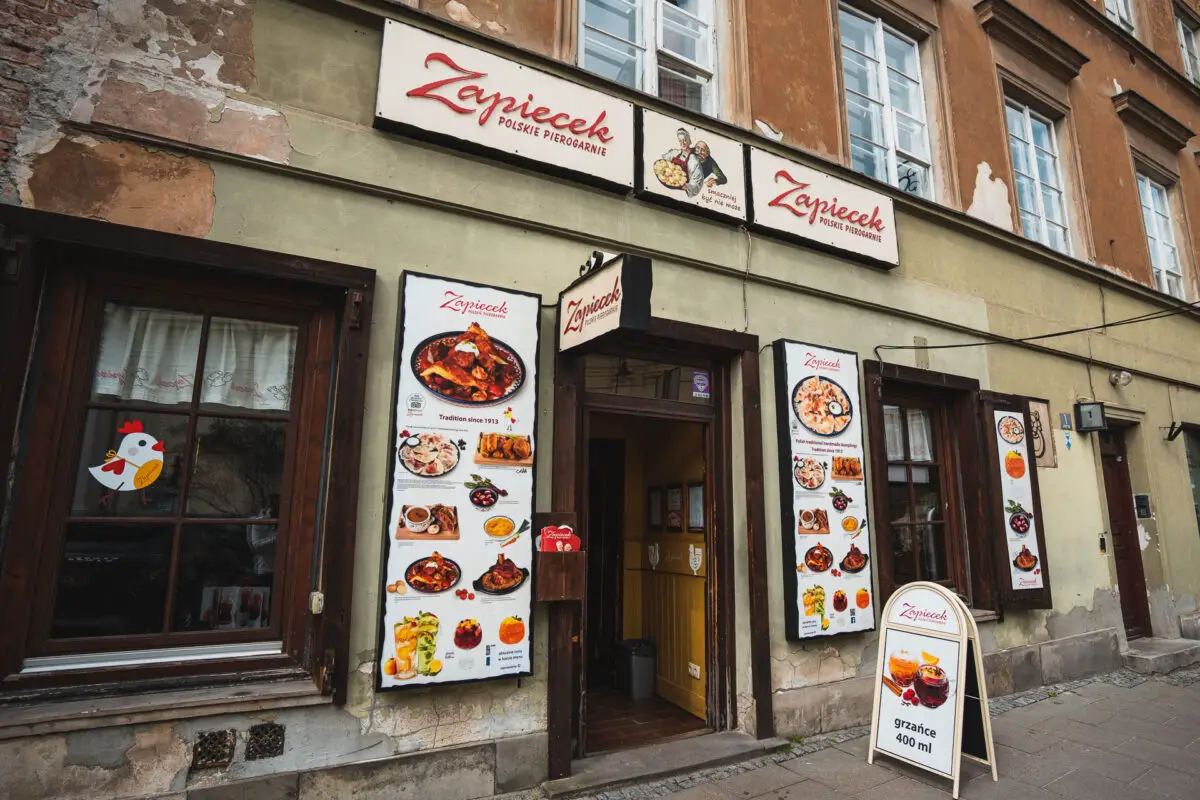
Traditional sit-down Polish restaurants, found in every Polish city, are the easiest, and perhaps best, commercially available way to try Polish food. There are especially restaurants related to pierogi, such as Pierogarnia Mandu in Gdańsk, or Zapiecek in Warsaw. But, if you fancy being a chef, and you want to try your hand at cooking some of the easier things on your list, you can go to Carrefour Market or Biedronka. You can also skip the steps and get pre-made pierogi, barszcz, bigos, kotlet, etc. For pierogi from the shop, I recommend pan-frying them in oil on the stove until golden brown. Ultimately, the best place to try Polish food is in a Polish household, where you get the most authentic experience possible. So, if you can somehow get an invitation into a Polish house or to a special occasion such as wedding, do not pass up the opportunity, as this is your best chance to try authentic Polish food! But regardless of the method, there are many ways to sample what Polish cuisine has to offer, and I hope you get to try every food on this list!

